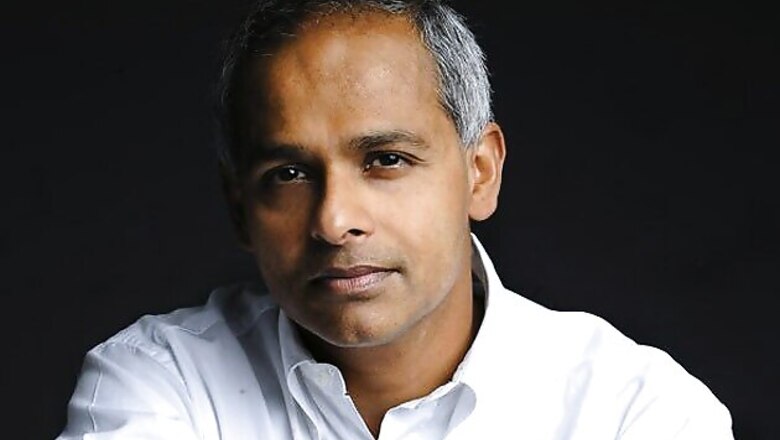
views
As a gloomy New Year for investors starts off, here are some home truths about risk and returns.
Satyajit Das
Profile: He is an expert on financial derivatives and risk management
Known for: His book 'Traders, Guns and Money' was almost prescient in the way it foresaw the troubles of corporate India with derivatives in 2007
Investors approach investment in the same way that Woody Allen approached the subject of divinity: "If only God would give me some clear sign! Like making a large deposit in my name in a Swiss bank." For the last 20 years, despite occasional lapses, the mysterious investment gods have given clear signs of their existence — showering munificent high returns on investors.
As smart investors know, investment genius is a long position, leverage and a rising market. A rising tide, as they say, lifts all boats. But that may now be all in the past.
The global economic recovery is stalling. Major economies, such as the US, Europe and Japan remain mired in slow, low growth as they deal with legacy problems of debt, banking problems and deep-seated structural imbalances. Germany and emerging market economies, like China and India, which have contributed the bulk of global growth since 2008, are showing signs of slowing.
Government policy options are severely restricted because of excessive debt levels and the reluctance of investors to finance indebted sovereigns. Interest rates in most developed countries are low or zero, restricting the ability to stimulate the economy by cutting borrowing costs. Unconventional monetary strategies — namely printing money or quantitative easing — have been tried with limited success. Further doses, while eagerly anticipated by market participants, may not be effective.
If markets seize up again, then "this time it will be different". There might just not be enough money to bail out everyone and every country that may need rescuing. The rapid and marked deterioration in economic and financial conditions means that the risk of a serious disruption is now significant.
Emerging markets face additional problems. The effects of the excessive credit expansion in China and India are showing up in bad bank debts. Emerging markets face significant losses on their holdings of G-7 securities in which foreign exchange reserves are held. Imported inflation, primarily in energy and commodities, is also an increasing concern.
The Viagra of investment – leverage – which drove high returns pre-2007 is also now unavailable as the global economy reduces debt.
As the global economy resets, the prospects are for lower returns and increased volatility. The US stock market took 25 years to regain its highs after 1929. Japanese stocks (down some 75 per cent from its peak) and property markets (down between 50-70 per cent) have still not recovered the levels of 1989.
Decent returns can be still earned during periods of great uncertainty. They just require different investment approaches.
Governments bonds are no longer risk-free safe havens. The risk of default or loss of purchasing power either through devaluation of currency or diminution of purchasing power is prominent.
Risk premiums are frequently negative as investors flock to safe assets or the latest and best investment — US and German bonds, high-yield corporate bonds or high-dividend stocks.
Diversification to mitigate risk is difficult as correlation between different investment assets has become volatile. The fundamental risk of domestic shares, international shares and property is similar in the current economic environment. Even returns on cash are positively correlated to risky assets as interest rates have fallen in the recession.
Tail risk, the chance of large and frequent increases and decreases in prices, is also evident.
Investment structures compound the investor's dilemma.
Traditional mutual funds operate to generate relative returns measured against a benchmark. Unfortunately, beating a benchmark by 5 per cent provides cold comfort to investors when the investment manager is down 15 per cent and the market falls by 20 per cent. Only absolute return now counts.
Management fees and fund expenses are a significant drag on returns. Management fees and expenses of 2 per cent are tolerable when the returns are 12 per cent, but difficult to bear when the returns are 5 per cent or lower.
In choppy markets, rapid changes in the composition of the portfolio — including switches between assets and instruments (physical versus derivative; symmetric versus asymmetric exposure) — is required. Long periods of staying uninvested, holding cash or other defensive assets, may be necessary. Today, investment mandates require investment in a single asset class or limit switching. Such mandates constrain the type of instruments used and force the fund to stay substantially invested at all time. This restricts the ability to generate positive returns.
Traditional investment styles may not work. Value investing, buying stocks based on fundamental analysis when they look cheap, has historically been successful. The hidden value can be released through cash flow, dividends or acquisition in the long run. But since 2008, value investing has performed indifferently. Arbitrage strategies, such as relative value trading and long-short equity or equity pairs trading, have also performed poorly.
The failures reflect uncertainty about correct values, risk-on/ risk-off trading, risk aversion, illiquidity and the lack of convergence to theoretical values.
Pooled investments also present problems. In commingled funds, where the investor is invested alongside others, performance may be influenced by the weakest holder. As weaker investors withdraw, funds may be forced to liquidate in unfavourable markets, driving down valuations even further. This affects the returns of the most stoic long-term investors.
Mark-to-market, often based on illiquid and uncertain prices that do not approximate true values, compounds the problems. Investments which may prove sound in the long term cannot be held because of the difficulty of absorbing short-term valuation swings.




















Comments
0 comment